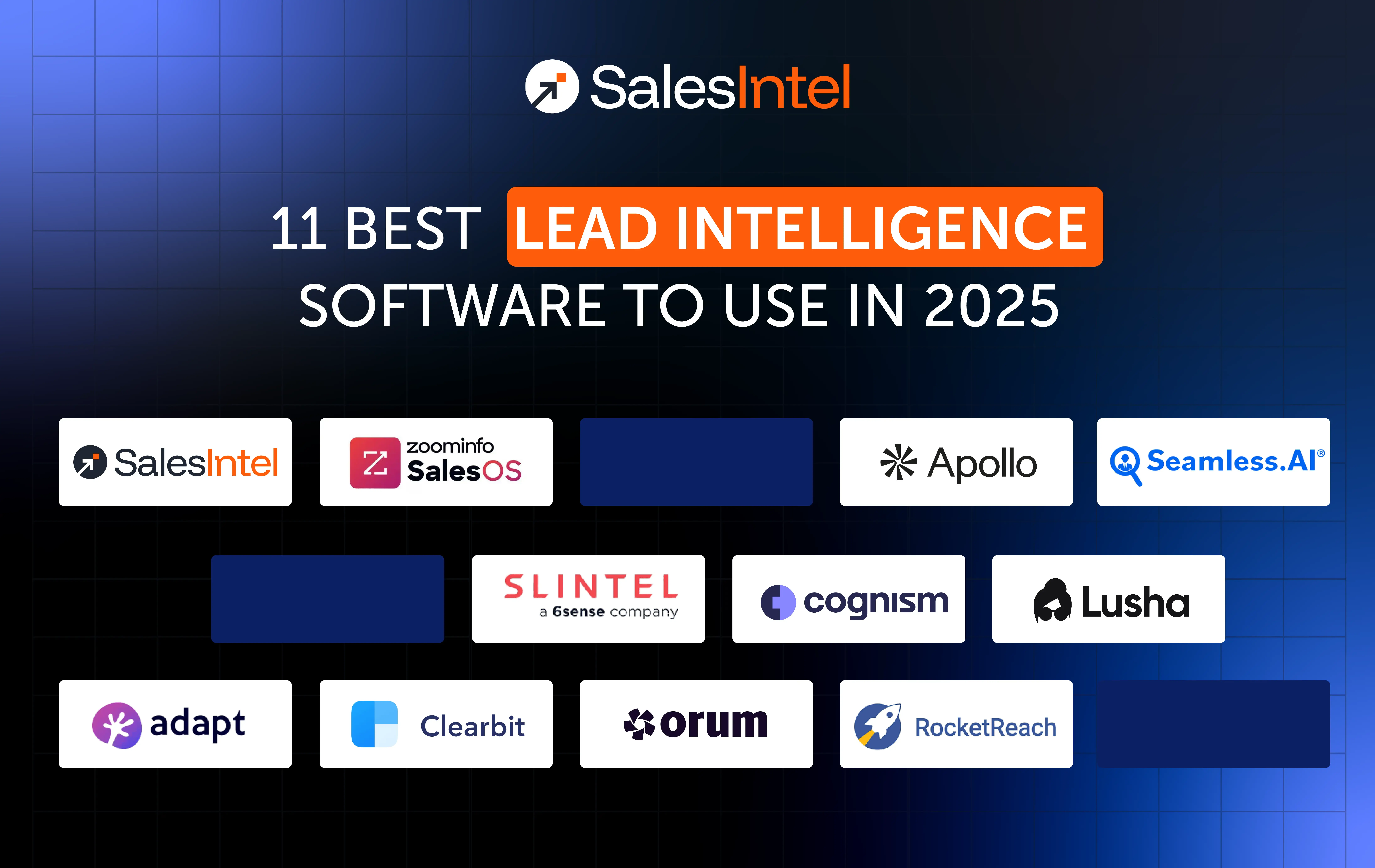Is your targeting strategy just guesswork in a suit?
Sometimes, it’s not the product or the pitch, it’s the person you’re pitching to. And if you’re talking to everyone, chances are you’re convincing no one. That’s where market segmentation steps in quietly, fixes the mess, and makes your GTM efforts look smart again.
Because while it’s tempting to believe your solution works for everyone, the truth is, someone specific is far more likely to buy.
Why Market Segmentation Still Gets Overlooked
You’d think by now, with all the data and tech available, businesses would have segmentation nailed. But many mid-market companies are still relying on legacy tactics such as mass email blasts, vague ICPs, and filters so broad they might as well be throwing darts in the dark. It’s like trying to do precision surgery with oven mitts on.
The result?
- Marketing speaks to the wrong audience.
- Sales waste hours chasing low-fit leads.
- Pipeline velocity suffers.
- And leadership starts asking, “Do we need more SDRs or just better data?”
The Core of Segmentation: It’s Not What You Think
At first glance, market segmentation feels deceptively simple. You divide your audience by industry, company size, maybe revenue range, and call it a day. But what if that segmentation is only showing you the polite handshake and not the buying intent behind the scenes?
It Looks Neat in a Spreadsheet. Until It Doesn’t.
Segmenting by company size can help you tailor messaging. Segmenting by industry can help you prioritize accounts. Both are good. But neither is enough. Let’s take a common B2B scenario. You’re selling cybersecurity software. You know fintech companies are a high-priority vertical.
So you filter your database for financial services firms with more than 500 employees.
Great. Now what? Here’s where many sales and marketing teams hit cruise control.
But good segmentation is not about comfort, it’s about clarity.
Look Beneath the Surface: Data Has Layers
Think of basic segmentation like the top of an iceberg. It’s tidy and visible, but the real mass, the good stuff, is hidden below the surface.
Now, imagine you added two more layers to your segmentation: intent data and technographics. Let’s say your prospect, a mid-market fintech firm, recently searched for cloud security tools. That’s intent. They’re not just in your industry, they’re actively researching solutions.
Now add the fact that they’re still running an outdated firewall system based on your tech stack insights. That’s technographics. You know not just who they are, but what their pain points are likely to be.
Suddenly, you’re not just targeting fintech. You’re targeting fintech that is vulnerable, interested, and ready.
Segmentation That Connects Dots, Not Just Columns
Segmenting based on basic firmographics will get you a contact list. Segmenting with intent and technographic overlays will get you qualified conversations.
Here’s the difference:
Basic segmentation asks, “What kind of company is this?”
Advanced segmentation asks, “Is this the right company, right now, with the right problem?”
Let’s say your sales rep calls two companies. Both are in fintech. Both are mid-market. Only one of them recently secured Series B funding, has tripled hiring in DevOps, and visited your pricing page three times in a week.
- Which one gets the callback?
- Which one becomes pipeline?
- And which one do you wish you’d never called on a Monday morning?
When Segmentation Goes From Lazy to Laser
Many RevOps teams confuse motion with progress. Just because a list is long doesn’t mean it’s right. Segmentation isn’t a data exercise. It’s a revenue strategy. If your audience filters feel like checkbox activity, it’s time to upgrade.
Ask better questions of your data. Look beyond the obvious.
- Are your target accounts showing buying behavior right now?
- Do they have a compatible tech stack for your solution?
- Have they engaged with your site or content in the last 30 days?
If you’re not answering these, you’re doing segmentation the hard way. The loudest teams in the room are often the ones cleaning up after another outreach miss.
So Where Does SalesIntel Fit In?
SalesIntel helps companies take segmentation from a checkbox task to a competitive advantage. It provides the data that actually helps you make smart segmentation decisions, not just a bigger list. Because it’s not about having more contacts, it’s about having the right contacts in the right context.
Here’s how:
1. Firmographic Precision
SalesIntel allows you to go beyond “mid-sized tech companies.”
You can filter by revenue, employee count, growth trajectory, and even regional coverage.
This helps your sales team stop chasing dead ends and start conversations where there’s real potential.
2. Technographic Data That Speaks Volumes
Knowing what tools a company is currently using is gold for SaaS sales.
SalesIntel shows you whether your prospects are using a competitor, are overdue for an upgrade, or have a stack that fits your integrations. That’s how you walk into a conversation with context, not guesswork.
3. Intent Data That’s Actually Useful
Most marketers nod knowingly at the phrase “intent data.” Fewer can explain how to use it.
SalesIntel’s intent layer surfaces accounts showing buying signals in real time, so you don’t just hope your message lands, you know they’re ready to listen.
4. ICP Workshops That Aren’t Just Fluff
Here’s where it gets personal. SalesIntel doesn’t just give you tools, they work with you to define and refine your ICP (Ideal Customer Profile). Because sometimes the problem isn’t the message, it’s the messenger, worse, the list you’re sending it to.
Why Segmentation Feels Harder Than It Should Be
For most mid-market teams, it’s not the will that’s missing, it’s the way. You’re wearing multiple hats, running lean teams, and doing your best to balance growth with efficiency. You can’t afford wasted motion.
But without the right data, segmentation quickly turns into educated guesswork. And if you’ve ever run a campaign thinking, “This should work,” only to get crickets, you know exactly what that feels like.
A Mid-Market Example: Turning Insight into Impact
Take BlackHawk Data, a digital commerce leader.
They had a strategy.
They had sales muscle.
What they didn’t have was clean, accurate, relevant data.
After switching to SalesIntel, they ran smarter segmentation plays. No more spraying generic messaging and praying.
With intent signals, firmographic filters, and a real-person support team to guide them, they achieved:
- 40% faster outreach
- 28% cleaner data
- 15% boost in win rates
“Thanks to SalesIntel’s real-person support and hands-on training, resulted in 15% boost in win rates, the biggest driver of our success. We’ve also cut bad data by 28%, expanded our target coverage by 25%, and accelerated our outreach by 45%, all while ramping up new hires 20% faster. Their team genuinely cares about our results.”
— MaryAnn Pagano, Founder and CEO of BlackHawk Data
Segmentation is Not Just a Marketing Problem
Marketing might own the ICP slide in the board deck, but sales, product, and success teams feel the impact of bad segmentation too.
- Sales spends hours working leads that were never a good fit.
- Product builds features no one asked for.
- Customer Success juggles high-churn clients who never should’ve been sold to begin with.
When segmentation is off, everyone feels it. When it’s on point, it doesn’t just fuel pipeline, it protects retention, accelerates onboarding, and improves customer outcomes.
Pro Tip: Don’t Segment Once and Forget It
One of the most common mistakes mid-market teams make? They segment once and assume it’s done. But markets change, technologies evolve, and so do buyer behaviors. Data from McKinsey suggests that B2B buyers now use an average of 10 or more channels during their decision-making process, up from just 5 a few years ago. (McKinsey Source)
That’s a moving target. Your segments should move with it.
With SalesIntel, your segments evolve in real time. Thanks to ongoing enrichment, human-verified data updates, and real support when you need it.
Final Thoughts: Precision Beats Volume, Every Time
You can buy the biggest list on the market. You can send more emails than your competitors. You can hit your outbound quota early every week. But if your segmentation is off, all you’re doing is wearing your team out and annoying the wrong audience.
SalesIntel doesn’t just help you reach more people. It helps you reach the right people, with the right message, at the right time. Because in a world full of noise, clarity wins.
If you’d like help refining your segmentation strategy or want to see how your current ICP measures up, book a free consultation with SalesIntel.
It might just be the wrench your pipeline needs.




![10+ Sales Pipeline Management Tools [+Tips]@4x](https://salesintel.io/wp-content/uploads/2025/09/10-Sales-Pipeline-Management-Tools-Tips@4x.webp)
